Reviews
La Clinique de la terreur / David Cronenberg’s The Brood
David Cronenberg
Canada, 1979
Credits
Review by Leo Goldsmith
Posted on 30 October 2007
Source MGM Home Entertainment DVD
Categories 31 Days of Horror
My concern is that the child could have a very serious breakdown if she doesn’t come to terms with what she’s experienced. You see these things tend to express themselves in one way or another. I’ve seen five-year-olds like your daughter with ulcers as bad as any middle-aged businessman.
Horror movies are often much more nurturing and even anodyne to our more delicate sensibilities than perhaps we realize. On a recent viewing of The Birds, I was struck by how tender the film was; it is a landmark in “nature attacks!” horror films, a staple example of its director’s supposedly violent misogyny, and yet it appeared to me a film more about family therapy than apocalypse and auteuristic sadism. It’s a far more equivocal film than Psycho, and could well be an answer to it: instead of siccing a malevolent mother against the world, it pitches a group of people together in a deeply unpleasant situation as a way of allowing them to deal with each other’s emotional baggage and form a new family. In some ways, the birds themselves have nearly nothing to do with the film at all, although of course the film wouldn’t be nearly so entertaining without their occasionally menacing a child or gouging someone’s eyes out.
I digress at length about Hitchcock’s film because it seems to me, like David Cronenberg’s The Brood, to be one of those horror films most concerned with the subject of therapy, even a sort of family counseling. On many subsequent viewings of each film, I have been surprised to find that, contrary to my early interpretations, this subject was not just a MacGuffin for a much more entertaining film about birds or creepy children respectively, but in fact the reverse was true: the more overtly horrific elements of each film are the well-crafted and highly entertaining rewards offered by each director to his audience in exchange for an otherwise emotional film about how best to deal with the aftereffects of abuse, neglect, loss, and other various forms of neurosis. Of course, abject insanity and deep-seated delusion are ripe subjects for many examples of a certain kind of horror film (of which The Cabinet of Dr. Caligari is the archetype), but Cronenberg’s and Hitchcock’s films use the pretext of horror to deal with something far closer to home, something not even terribly far removed from the experience of the normal, non-psychotic members of the film’s audience.
Or, indeed, from the filmmakers. Famously, Cronenberg wrote his film while undergoing a rather bitter custody battle with his own wife, and the film’s portrayal of Nola Carveth Kelly, the strange estranged wife of Frank Carveth, is indeed unflattering. “You got taken in,” Frank tells himself. “You got involved with a woman who married you for your sanity, hoping it would rub off. Instead, it started to work the other way.” During their custody battle, the “insane” Nola has been fully tucked away at the Somafree Institute of Psychoplasmics, undergoing the advanced and rather suspicious treatment of Dr. Hal Raglan. A weird amalgamation of creepy, cultish “self”-help programs, from Scientology to
While ensconced in her psychoplasmic regimen, Nola is removed from all but Raglan and his Somafree orderlies, and is only allowed weekend visits from her five-year-old daughter, Candy. But when Candy returns from her regular visitation covered in scratches and bruises and sheepishly muttering “Daddy … Daddy,” Frank decides to step up his custody battle, implicating the shadowy Dr. Raglan as an “emotional opportunist” whose treatment is causing violent behavior in his estranged wife. But of course, this is only half the story, and the more Frank probes psychoplasmics, the more Raglan probes Nola. “Phase Two” of his Somafree regimen elicits from her the full shape of her rage — a brood of tow-headed, snow-suited demon-children with “strange, beak-like gums,” fleshy yolk-sacs on their backs, and rather nasty tempers.
Just how this brood materializes, it will be the pleasure (or horror) of the spectator to discover for himself (though the technical definition of the term “brood” offers some hint). It should suffice to say that Cronenberg’s film admittedly shares much with a film like Lynch’s Eraserhead in its revulsion with all things gynecological. Like Lynch’s film, The Brood is partly about a man’s disgust at his female partner’s reproductive capability, which is itself surely linked to the man’s sexual desire for this female partner and how this desire is thwarted or even quashed by this alien process that the woman is undergoing. This is a horribly sexist and somewhat juvenile response, as I’m sure both filmmakers understand, but its effectiveness as the subject for a horror film is undeniable, and each film exploits this horror quite well. But unlike Eraserhead, Cronenberg’s film is explicitly about engaging with and attempting to overcome such horrors, and Cronenberg’s exploitation of Frank’s disgust at his wife as precisely the kind of psychosomatic trauma that his films rely upon as “issues” with which his characters (and his films) are trying to “come to terms.”
Compared to most horror films, The Brood displays a remarkable amount of sensitivity about the effects that the film’s events have on the characters’ emotional health. This is particularly evident in all of the speculation about the ways in which the film’s events might be affecting young Candy. The couple’s divorce, the possible abuse, the witnessing of her grandmother’s fatal beating with a meat tenderizer — each is a new cause for Frank’s concern about the lasting psychic damage that may be visited upon his daughter. Perhaps conscious of the physical and emotional abuse that Nola suffered at the hands of her own mother, Frank is no doubt wary that a cycle of trauma and neurosis would be perpetuated, handed down from generation to generation. In Frank’s estimation, this trauma is like a contagion, spreading and consuming every object of Nola’s rage.
But for all of Frank’s frustration with his wife, and regardless of her quite inevitable fate, Cronenberg’s film never quite seems as bitter and misogynistic as it might be, and this has much to do with the actual amount of therapy enacted onscreen. As quietly skin-crawling as Oliver Reed’s performance as Raglan can be, we ultimately realize that psychiatric care is his main goal, even if it is also food for his megalomania. That so much of his screen-time is spent in bizarre role-playing games with Samantha Eggar’s wide-eyed, almost extraterrestrial Nola is surely a disquieting reminder of the excess of power that some psychiatrists can wield over their patients. But it also elicits a great deal of pathos for Nola, whose deep-rooted neuroses have compounded into bitter love-hate relationships with all around her. That Raglan’s method elicits the worst of her emotions, rather than soothing the better ones, earns the therapist-guru his own unpleasant fate, but one cannot help but notice his nobility. The Brood is not about pointing the finger of blame at false prophets, psychoplasmicists, and other emotional opportunists, but is rather more about the emotional and physical ways we deal with pain, especially the pain inflicted upon us as children, how we remember and reprocess it, and how we might revisit it upon our own offspring.
“Thirty seconds after you’re born, you have a past; and sixty seconds after that, you start to lie to yourself about it,” claims Nola’s “fucked up and bad” mother, and in a sense, she puts her finger on the cause of the problem: the failure of communication. Nola repeatedly tries to telephone Frank, but Raglan’s helpers always cut off this communication. Instead, she must interact with her real-life demons through Dr. Hal, and in turn she creates her own little demons to carry out her violent emotions in the real world. Nola’s tragedy is that she is kept from dealing with the sources of her pain face to face, and therefore this pain — as it manifests itself in melancholia, violence, or angry, little pustules — is doomed to repeat itself. It is, to paraphrase Yogi Bera, the return of the repressed all over again, and therefore the perfect nutrient for the seriality of horror films. The Brood has no sequels (or, thankfully, remakes), but in its final shot of Candy’s suspicious skin inflammations, it nonetheless gestures towards the typically cyclical nature of the horror genre. We see Candy going home with her father, marked with the emotional trauma inflicted on her by her mother’s illness. It will henceforth be her lot to come to terms with this trauma, or not. There is no magic bullet, no panacea, and no guru with easy answers.
More 31 Days of Horror
-

Alien
1979 -
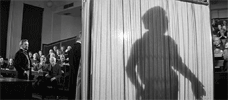
The Elephant Man
1980 -
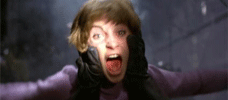
My Bloody Valentine
1981 -
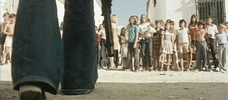
Who Can Kill a Child?
1976 -

Cannibal Holocaust
1980 -
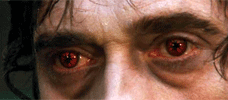
Let Sleeping Corpses Lie
1974 -
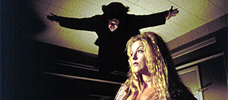
John Carpenter’s Vampires
1998 -

Jaws 2
1978 -

A Warning to the Curious
1972 -

Wolf
1994 -

The Survivor
1981 -
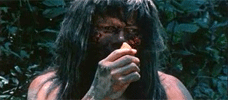
Cannibal Ferox
1981 -
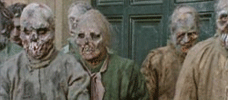
The Nights of Terror
1981 -
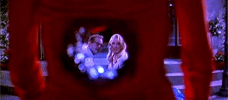
Death Becomes Her
1992 -
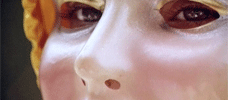
Alice, Sweet Alice
1976 -
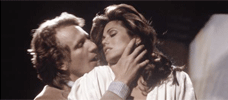
Body Double
1984 -
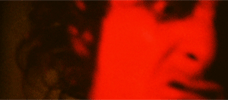
Invocation of My Demon Brother
1969 -
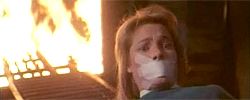
Phantasm II
1988 -
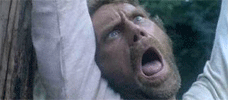
Emanuelle and the Last Cannibals
1977 -

The Wicker Man
1973 -
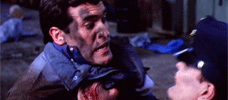
Maniac Cop
1988 -
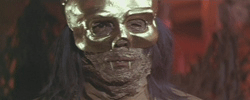
The Legend of the 7 Golden Vampires
1974 -
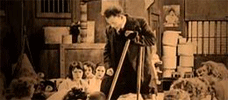
The Penalty
1920 -
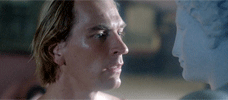
Boxing Helena
1993 -

Chew on This
2005 -
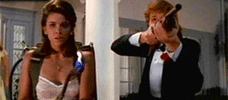
Night of the Creeps
1986 -
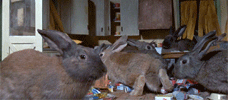
Night of the Lepus
1972 -
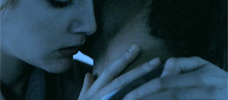
Near Dark
1987 -
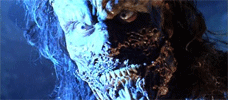
Army of Darkness
1992 -
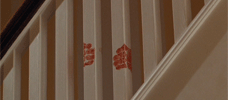
The Brood
1979 -
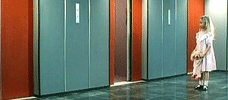
The Lift
1983 -

Amsterdamned
1988 -
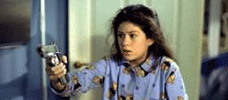
Silent Witness
1999 -

The Shaft
2001
We don’t do comments anymore, but you may contact us here or find us on Twitter or Facebook.



